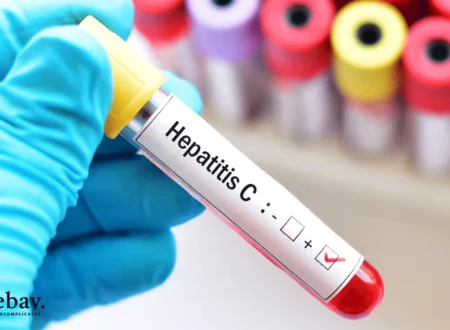Introduction:
In recent years, the field of mental health treatment has witnessed a growing interest in alternative therapies, particularly for treatment-resistant depression. Among these alternatives, ketamine has emerged as a promising option, showing rapid and significant improvements in depressive symptoms where traditional treatments have failed. In this article, we delve into the world of ketamine treatments for depression, exploring its efficacy, safety, and potential impact on mental health.
Understanding Ketamine Mechanism of Action and History
Ketamine, originally developed as an anesthetic, has garnered attention for its rapid antidepressant effects. It operates primarily by blocking NMDA receptors, leading to increased glutamate release and subsequent synaptic plasticity. This unique mechanism contrasts with traditional antidepressants, which target monoamine neurotransmitters. Despite its history in anesthesia, ketamine’s potential for treating depression has spurred research and clinical interest, paving the way for novel approaches to mental health care.
Rise of Ketamine as a Treatment for Depression are:
- Ketamine has gained prominence as a novel treatment for depression, particularly for individuals resistant to conventional antidepressants.
- Its rapid onset of action distinguishes ketamine from traditional medications, providing relief from depressive symptoms within hours rather than weeks.
- Research has shown that ketamine infusion therapy can result in significant and sustained improvements in mood, often lasting days to weeks after treatment.
- Ketamine’s effectiveness in treating depression has sparked interest in its potential as a breakthrough therapy, offering hope for those who have not responded to other treatments.
- Despite its promising results, the long-term efficacy and optimal dosing regimens of ketamine for depression are still under investigation, highlighting the need for further research in this field.
How Long Does Ketamine Work for Depression?
The duration of ketamine’s antidepressant effects can vary among individuals and may depend on several factors, including the dosage administered, the frequency of treatments, and the severity of depression. However, research suggests that ketamine’s therapeutic benefits typically last for days to weeks following a single infusion.
Some individuals may experience sustained improvement in depressive symptoms for several weeks after treatment, while others may require periodic “booster” infusions to maintain the antidepressant effect. Overall, the duration of ketamine’s efficacy in treating depression remains an area of ongoing investigation, with researchers striving to better understand and optimize its use for long-term management of depressive disorders.
Efficacy of Ketamine in Alleviating Depressive Symptoms are:
- Loss of interest
- Changes in appetite
- Sleep disturbances
- Fatigue, loss of energy
- Feelings of worthlessness
- Difficulty concentrating
- Irritability, restlessness
- Physical symptoms

Ketamine can be administered through IV, IM, Nasal
Ketamine, a versatile medication renowned for its anesthetic and analgesic properties, can be administered through multiple routes to address various medical needs, including the treatment of depression and chronic pain. One common method of ketamine administration is intravenous (IV) infusion, where the medication is delivered directly into the bloodstream. IV infusion offers rapid onset of action, making it ideal for acute settings such as surgical procedures or emergent pain management. Additionally, IV administration allows for precise control over dosage, facilitating adjustments based on individual patient responses.
Intramuscular (IM) injection represents another viable option for ketamine delivery, particularly in situations where IV access may be challenging or impractical. IM injections provide a slower onset of action compared to IV infusion but still offer effective pain relief or sedation. This route is commonly utilized in emergency medicine, psychiatry, and outpatient settings where rapid relief of symptoms is desired without the need for invasive procedures. Furthermore, ketamine nasal spray has emerged as a convenient and non-invasive method of administration, offering a patient-friendly alternative for individuals requiring ongoing treatment for conditions such as depression or chronic pain.
Safety Concerns Surrounding Ketamine Use
Safety Concerns Surrounding Ketamine Use revolve around potential adverse effects such as hallucinations, dissociation, elevated blood pressure, and respiratory depression. Additionally, misuse or abuse of ketamine can lead to dependence, addiction, and long-term cognitive impairment. Special caution is warranted for individuals with cardiovascular conditions, psychiatric disorders, or a history of substance abuse. Proper monitoring, dosage adjustments, and patient education are crucial to mitigate risks and ensure safe ketamine administration in medical settings.
Addressing the Stigma Misconceptions and Reality
- Educate about medical uses
- Highlight efficacy in treatment
- Refute stigmatizing beliefs
- Encourage open dialogue
- Share success stories
- Support advocacy efforts
- Emphasize safety protocols
- Foster collaborative efforts
Ketamine Therapy Protocols Frequency and Duration of Treatment
Ketamine therapy protocols encompass the frequency and duration of treatment sessions tailored to individual patient needs. Typically, initial ketamine treatments consist of a series of infusions administered over several weeks, aiming to achieve rapid symptom relief. The frequency of sessions may vary, with some patients receiving treatments multiple times per week initially, followed by tapering schedules as symptoms improve. The duration of ketamine therapy varies among patients, influenced by factors such as the severity of depression, treatment response, and individual treatment goals. Long-term maintenance treatments may be recommended to sustain therapeutic benefits and prevent symptom recurrence, with periodic assessments to adjust treatment plans as needed.
Determining the number of ketamine treatments for depression is crucial, considering factors like patient response, symptom severity, and treatment goals. Some may need few sessions for improvement, while others may require ongoing treatment. This personalized approach ensures optimal management with minimized risks and improved outcomes.

Ketamine as a Bridge to Long-Term Treatment Solutions
Ketamine serves as a bridge to long-term treatment solutions by providing rapid relief for individuals with treatment-resistant depression. Its fast-acting antidepressant effects offer immediate symptom alleviation while patients await the onset of traditional antidepressants. Additionally, ketamine therapy may facilitate engagement in psychotherapy and other long-term interventions, offering a transitional pathway towards sustainable mental health management. This bridging effect holds promise for improving outcomes and quality of life for those struggling with persistent depressive symptoms.
How Many Ketamine Treatments for Depression?
Here are ketamine treatments for depression:
- Varied treatment frequencies
- Individualized dosing regimens
- Response-driven treatment adjustments
- Ongoing assessment and monitoring
Integrating Ketamine Therapy: Challenges and Opportunities
Ketamine therapy integration into mental health care presents both challenges and opportunities. Challenges include ensuring standardized protocols, addressing safety concerns, and overcoming stigma. Opportunities lie in leveraging ketamine’s rapid efficacy, expanding treatment options, and improving outcomes for treatment-resistant patients. Successful integration requires collaboration between healthcare providers, policymakers, and advocacy groups to navigate complexities and maximize the therapeutic potential of ketamine in mental health care.
Addressing Treatment Frequency for Depression
Integrating ketamine therapy into depression treatment involves determining the optimal number of ketamine treatments for each patient. This process requires assessing individual response rates, severity of depression, and treatment goals. While some patients may experience relief after a few treatments, others may require ongoing sessions to maintain symptom improvement. Therefore, personalized treatment plans are essential to tailor ketamine therapy frequency to meet the unique needs of each individual battling depression.
Conclusion:
In conclusion, ketamine treatments offer hope for depression management, especially for those unresponsive to conventional therapies. While ongoing research aims to fully understand ketamine’s potential, current evidence indicates its transformative impact on mental health care. By further exploring its mechanisms, refining treatment protocols, and addressing safety concerns, we can unlock ketamine’s promise for those battling depression. Moving forward, diligence, compassion, and a commitment to improving lives are essential in approaching ketamine therapy. Read more about The Silent Struggle: Understanding the Symptoms and Diagnosis of High-Functioning Depression.
Q1: What is ketamine, and how does it differ from traditional antidepressants?
Ketamine is a dissociative anesthetic that acts on different neurotransmitter systems compared to traditional antidepressants. It works rapidly to alleviate depressive symptoms, often within hours or days, as opposed to weeks or months with conventional medications.
Q2: What types of depression are ketamine treatments typically recommended for?
Ketamine treatments are often recommended for individuals with treatment-resistant depression, including major depressive disorder (MDD) and bipolar depression. It may also be considered for those at risk of suicide or experiencing acute depressive episodes.
Q3: How effective is ketamine in treating depression?
Clinical studies have demonstrated that ketamine can produce rapid and significant reductions in depressive symptoms, with response rates ranging from 50% to 70% in treatment-resistant depression populations.
Q4: What are the different forms of ketamine administration for depression treatment?
Ketamine can be administered intravenously, intramuscularly, or through nasal spray formulations. Each method has its own advantages and considerations in terms of dosing, onset of action, and duration of effects.
Q5: Are there any potential side effects or risks associated with ketamine treatments?
While ketamine is generally considered safe when administered under medical supervision, it can cause temporary dissociation, increased blood pressure, and other side effects. Long-term effects and potential risks, such as addiction and cognitive impairment, are still being studied.
Q6: How frequently are ketamine treatments typically administered?
Treatment protocols vary depending on individual response and clinician recommendations. Initially, ketamine treatments may be administered more frequently, such as once or twice a week, followed by maintenance doses at longer intervals.
Q7: Can ketamine treatments be combined with other medications or therapies?
Ketamine treatments can be used in combination with traditional antidepressants, psychotherapy, and other adjunctive treatments. However, interactions and synergistic effects should be carefully monitored and managed by healthcare providers.
Q8: Is ketamine therapy suitable for everyone with depression?
Ketamine therapy may not be suitable for individuals with certain medical conditions, such as uncontrolled hypertension, substance use disorders, or psychosis. A thorough assessment by a qualified healthcare provider is essential to determine eligibility and safety.
Q9: How does ketamine work in the brain to alleviate depressive symptoms?
Ketamine’s rapid antidepressant effects are believed to involve modulation of glutamate neurotransmission, leading to synaptic remodeling and enhanced neuroplasticity in key brain regions associated with mood regulation.
Q10: What does the future hold for ketamine-based treatments in depression care?
Ongoing research aims to further optimize ketamine therapy, develop novel formulations with improved safety and efficacy profiles, and explore its potential applications in other psychiatric disorders, such as post-traumatic stress disorder (PTSD) and anxiety disorders.




















